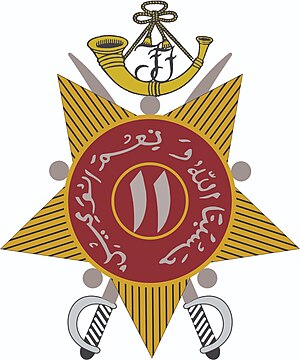
The North-West Frontier was a region of the British Indian Empire. It remains the western frontier of present-day Pakistan, extending from the Pamir Knot in the north to the Koh-i-Malik Siah in the west, and separating the modern Pakistani frontier regions of North-West Frontier Province, Federally Administered Tribal Areas and Balochistan from neighbouring Afghanistan in the west. The borderline between is officially known as the Durand Line and divides Pashtun inhabitants of these provinces from Pashtuns in eastern Afghanistan.

The 55th Coke's Rifles (Frontier Force) was a regiment of the British Indian Army. It was raised in 1849 as the 1st Regiment of Punjab Infantry. It was designated as the 55th Coke's Rifles (Frontier Force) in 1903 and became 1st Battalion (Coke's) 13th Frontier Force Rifles in 1922. In 1947, it was allocated to the Pakistan Army, where it continues to exist as 7th Battalion The Frontier Force Regiment.
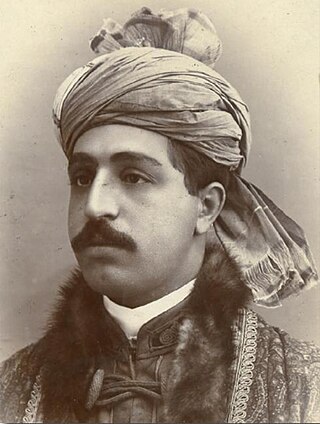
Ghazi Mohammad Ayub Khan also known as The Victor of Maiwand or The Afghan Prince Charlie was, for a while, the governor of Herat Province in the Emirate of Afghanistan. He was Emir of Afghanistan from 12 October, 1879 to 31 May, 1880. He also led the Afghan troops during the Second Anglo-Afghan War and defeated the British Indian Army at the Battle of Maiwand. Following his defeat at the Battle of Kandahar, Ayub Khan was deposed and exiled to British India. However, Ayub Khan fled to Persia. After negotiations in 1888 with Sir Mortimer Durand, the ambassador at Tehran, Ayub Khan became a pensioner of the British Raj and traveled to British India in 1888, where he lived until his death in 1914 in Lahore, Punjab. He was buried in Peshawar and had eleven wives, fifteen sons, and ten daughters. Two of his grandsons, Sardar Hissam Mahmud el-Effendi and Sardar Muhammad Ismail Khan, served as brigadiers in the Pakistan Army.

The Poona Horse is an armoured regiment in the Armoured Corps of the Indian Army. The regiment, known before independence as The Poona Horse, was raised as a regular cavalry regiment in the Bombay Presidency army of the East India Company. It was formed from the 3rd Regiment of Bombay Light Cavalry, raised in 1820, and the Poona Auxiliary Horse, raised about 1817–18. The latter unit was absorbed into the regular forces about 1860 and the two regiments later became the 33rd Queen Victoria's Own Light Cavalry and the 34th Prince Albert Victor's Own Poona Horse.
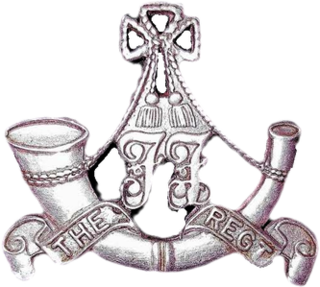
The Frontier Force Regiment is one of the six infantry regiments of the Pakistan Army. They are popularly known as the Piffers in reference to their military history as the PIF of the British Indian Army, or as the FF. The regiment takes its name from the historic North-West Frontier, a former province of British India and later Pakistan.

The 12th Frontier Force Regiment was formed in 1922 as part of the British Indian Army. It consisted of five regular battalions; numbered 1 to 5 and the 10th (Training) Battalion. During the Second World War a further ten battalions were raised. In 1945, the prenominal "12th" was dropped when the British Indian Army dispensed with prenominal numbering of its regiments. After the independence in 1947, it was formed into the Frontier Force Regiment, part of the army of Pakistan.

The 5th Horse is an armoured regiment of the Pakistan Army. It was previously known as the 5th King Edward's Own Probyn's Horse, which was a regular cavalry regiment of the British Indian Army. It was formed in 1921 by the amalgamation of the 11th King Edward's Own Lancers (Probyn's Horse) and the 12th Cavalry.

The Guides Cavalry (Frontier Force) is an armoured regiment of the Pakistan Army which was raised in 1846 as The Corps of Guides. During more than a hundred and fifty years of military service, the regiment has earned the reputation of one of the most renowned military units in the world.
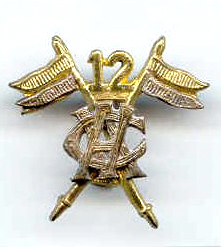
The 12th Cavalry Sam Browne's Cavalry (Frontier Force) is an armoured regiment of Pakistan Army. It was formed in the British Indian army in 1922 by the amalgamation of 22nd Sam Browne's Cavalry (Frontier Force) and 25th Cavalry (Frontier Force).

The 14th Punjab Regiment was a regiment of the British Indian Army from 1922 to 1947. It was transferred to the Pakistan Army on independence in 1947, and amalgamated with the 1st, 15th and 16th Punjab Regiments in 1956, to form the Punjab Regiment.

The 82nd Punjabis was an infantry regiment of the British Indian Army. It was raised in 1788, as the 29th Madras Battalion. It was designated as the 82nd Punjabis in 1903 and became the 5th Battalion 1st Punjab Regiment in 1922. In 1947, it was allocated to the Pakistan Army, where it continues to exist as 4th Battalion The Punjab Regiment.

The 24th Punjabis were an infantry regiment of the British Indian Army. It was raised in 1857, as the 11th Regiment of Punjab Infantry. It was designated as the 24th Punjabis in 1861 and became 4th Battalion 14th Punjab Regiment in 1922. In 1947, it was allocated to the Pakistan Army, where it continues to exist as 8th Battalion (CRACKS) The Punjab Regiment.
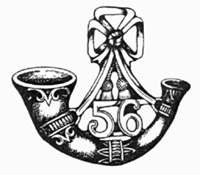
The 56th Punjabi Rifles (Frontier Force) was an infantry regiment of the British Indian Army. It was raised in 1849 as the 2nd Regiment of Punjab Infantry. It was designated as the 56th Punjabi Rifles (Frontier Force) in 1906 and became 2nd Battalion 13th Frontier Force Rifles in 1922. In 1947, it was allocated to the Pakistan Army, where it continues to exist as 8th Battalion The Frontier Force Regiment.

The 51st Sikhs (Frontier Force) was an infantry regiment of the British Indian Army. It was raised in 1846 as the 1st Regiment of Infantry The Frontier Brigade. It was designated as the 51st Sikhs (Frontier Force) in 1903 and became 1st Battalion (Prince of Wales's Own Sikhs) 12th Frontier Force Regiment in 1922. In 1947, it was allocated to the Pakistan Army, where it continues to exist as 3 Battalion The Frontier Force Regiment.

The 52nd Sikhs (Frontier Force) was an infantry regiment of the British Indian Army. It was raised in 1846 as the 2nd Regiment of Infantry The Frontier Brigade. It was designated as the 52nd Sikhs (Frontier Force) in 1903 and became 2nd Battalion (Sikhs) 12th Frontier Force Regiment in 1922. In 1947, it was allocated to the Pakistan Army, where it continues to exist as 4th Battalion The Frontier Force Regiment.
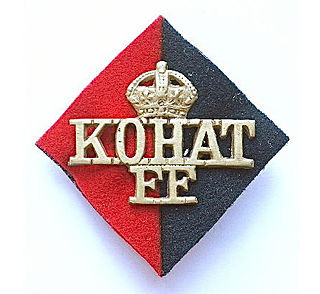
The 21st Kohat Mountain Battery (Frontier Force) was an artillery unit of the British Indian Army. It was raised in 1851 as the No. 2 Horse or Punjab Light Field Battery, Punjab Irregular Force. It became the 21st Kohat Mountain Battery (Frontier Force) in 1903. In 1947, it was transferred to the Pakistan Army, where it exists as the 2nd Royal Kohat Battery (Frontier Force) of The First (SP) Medium Regiment Artillery (Frontier Force).
The 23rd Peshawar Mountain Battery (Frontier Force) was an artillery unit of the British Indian Army. It was raised in 1853 as the Peshawar Mountain Train. It became the 23rd Peshawar Mountain Battery (Frontier Force) in 1903. In 1947, it was transferred to the Pakistan Army, where it exists as the 3rd Peshawar Battery (Frontier Force) of The First (SP) Medium Regiment Artillery (Frontier Force).
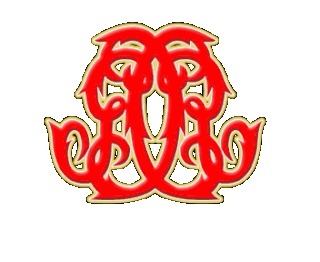
The Guides Infantry, or 2nd Battalion (Guides) The Frontier Force Regiment, is an infantry battalion of the Pakistan Army. It was raised in 1846 as part of the famous Corps of Guides, a highly mobile force to act as guides to troops in the field and gather intelligence beyond the borders of British India. The corps recruited men from various backgrounds, with Pathans, Punjabi Muslims, Sikhs, and Dogras forming the majority of their manpower. Under the leadership of Lieutenant Harry Burnett Lumsden, the Guides gained a formidable reputation and introduced the dust-colored "khaki" uniforms, later adopted by the British Army in India. The corps became part of the Punjab Frontier Force, known as Piffers, which maintained order on the Punjab Frontier for fifty years.
